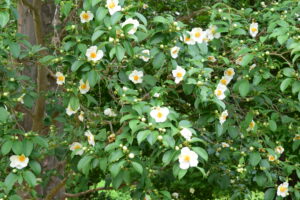Blooming at Bullington Gardens
go.ncsu.edu/readext?798260
en Español / em Português
El inglés es el idioma de control de esta página. En la medida en que haya algún conflicto entre la traducción al inglés y la traducción, el inglés prevalece.
Al hacer clic en el enlace de traducción se activa un servicio de traducción gratuito para convertir la página al español. Al igual que con cualquier traducción por Internet, la conversión no es sensible al contexto y puede que no traduzca el texto en su significado original. NC State Extension no garantiza la exactitud del texto traducido. Por favor, tenga en cuenta que algunas aplicaciones y/o servicios pueden no funcionar como se espera cuando se traducen.
Português
Inglês é o idioma de controle desta página. Na medida que haja algum conflito entre o texto original em Inglês e a tradução, o Inglês prevalece.
Ao clicar no link de tradução, um serviço gratuito de tradução será ativado para converter a página para o Português. Como em qualquer tradução pela internet, a conversão não é sensivel ao contexto e pode não ocorrer a tradução para o significado orginal. O serviço de Extensão da Carolina do Norte (NC State Extension) não garante a exatidão do texto traduzido. Por favor, observe que algumas funções ou serviços podem não funcionar como esperado após a tradução.
English
English is the controlling language of this page. To the extent there is any conflict between the English text and the translation, English controls.
Clicking on the translation link activates a free translation service to convert the page to Spanish. As with any Internet translation, the conversion is not context-sensitive and may not translate the text to its original meaning. NC State Extension does not guarantee the accuracy of the translated text. Please note that some applications and/or services may not function as expected when translated.
Collapse ▲In the early 1970s when Bob Bullington established his home, garden and nursery on what is now Bullington Gardens, he collected many interesting and unusual plants. At the time, plants from Asia were gaining in popularity in the U.S. and Bullington took part in that wave. The evidence is the many different forms of Japanese maples, pines and other plants on the property. One of the truly beautiful specimens he planted in his front garden is Japanese Stewartia (Stewartia pseudocamellia), pictured below. All year long this muscled, multi-stemmed tree with colorful, exfoliating bark is eye-catching. Very soon though, it will come into its prime and be covered with white blossoms that have a yellow center. Individual flowers don’t last long and drop to make a white carpet around the tree. But the blooms keep appearing for about a 3 week period.
 Bullington was also interested in native plants, perhaps developing that interest a little later. Currently a variety of mountain laurels in different colors are blooming as well as the large fringe tree covered in delicate white flowers. The native azalea collection, reportedly originating from Gregory Bald in the Smoky Mountains, has had plants blooming throughout the spring, but more are yet to come. The hybrids of Flame (Rhododendron calendulaceum) and Cumberland (Rhododendron cumberlandense, formerly bakeri) are just now opening up with their rich orange-reddish combinations.
Bullington was also interested in native plants, perhaps developing that interest a little later. Currently a variety of mountain laurels in different colors are blooming as well as the large fringe tree covered in delicate white flowers. The native azalea collection, reportedly originating from Gregory Bald in the Smoky Mountains, has had plants blooming throughout the spring, but more are yet to come. The hybrids of Flame (Rhododendron calendulaceum) and Cumberland (Rhododendron cumberlandense, formerly bakeri) are just now opening up with their rich orange-reddish combinations.
These are among the many plants blooming in the late spring at Bullington Gardens. The Gardens are open Monday-Saturday, 9:00-4:00.




